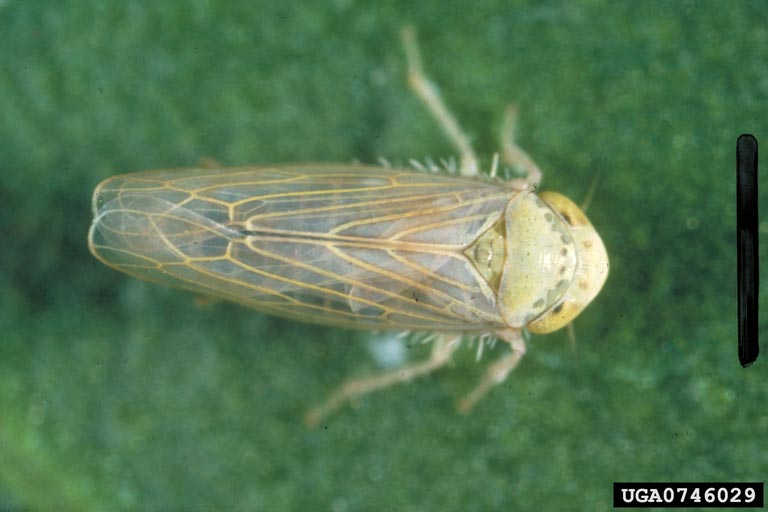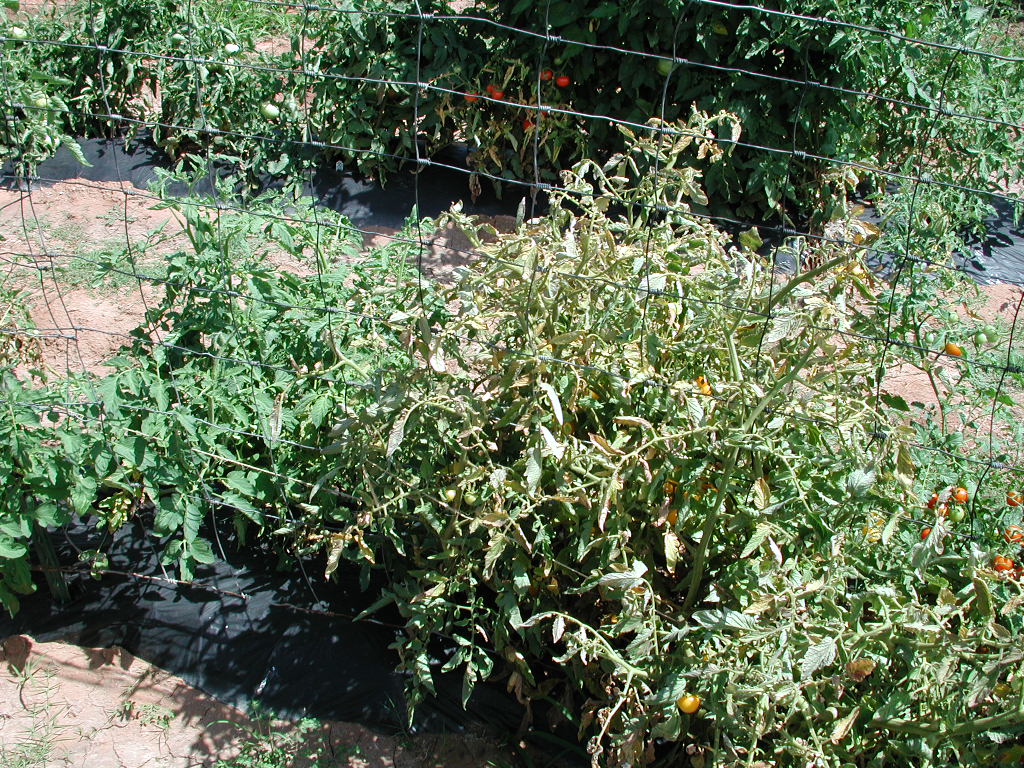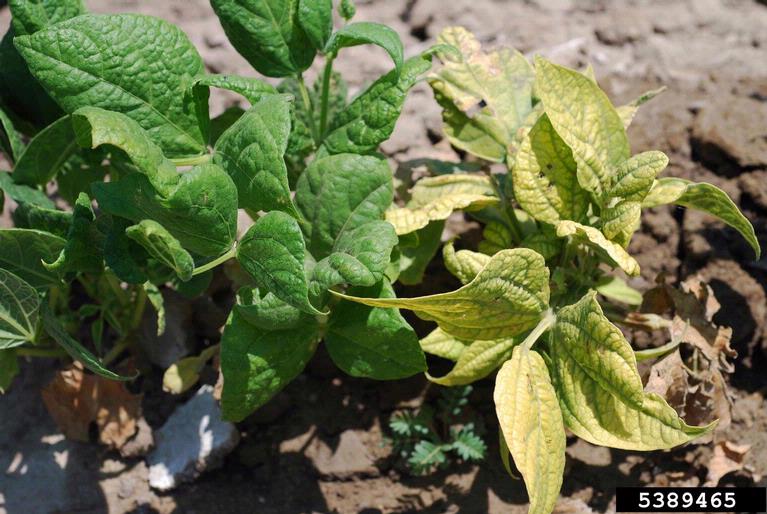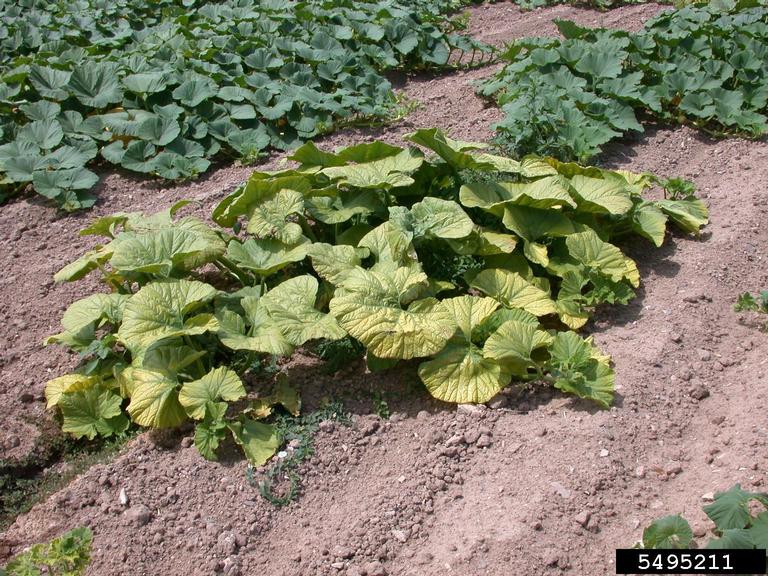 Management of Curly Top Virus - May, 17, 2017 Jeff Schalau, Agent, Agriculture & Natural Resources University of Arizona Cooperative Extension, Yavapai County Beet curly top virus (BCTV) is a continuing problem for growers and home gardeners in the Verde Valley. Verde Valley vegetable growers have been dealing with this BCTV for over 100 years and it was probably an issue for the Sinagua farmers going back hundreds of years. BCTV is prevalent throughout arid regions of the western U.S. and will continue to challenge vegetable growers for many years to come. BCTV is vectored from infected to non-infected plants by the beet leafhopper (BLH), a small plant-feeding insect. BCTV maintains its year-to-year presence on the greater landscape in infected rangeland plants and weeds which include native and non-native species. The most frequently cited host plants are Kochia and other plants in the Chenopodiaceae family, including Lambsquarter, Halogeton, Russian thistle (Tumbleweed), greasewood (Sarcobatus), and Four Wing Saltbush (Atriplex). After the BLH initially ingests plant cell sap containing the virus, incubation takes 4 to 21 hours before it can be transmitted to other plants. Once incubated, the BLH transmits the virus to other plants during feeding. BLHs have a piercing-sucking feeding habit where they inject and deposit virus particles inside the plant. BLHs carrying the virus need only to feed for 1 minute on an uninfected plant to transmit the virus. Symptoms usually begin to appear after 24 hours in hot temperatures and progress more slowly in cooler temperatures. BLHs that have acquired BCTV can transmit the virus for the remainder of their life; however, the number of plants infected decreases when the insects are not continually or frequently feeding on infected plants. Tomatoes are most commonly infected by BCTV, however beets, Swiss chard, spinach, beans and cucurbits can also be impacted. When a susceptible plant becomes infected, leaves become puckered and stunted. In particular, tomato leaves curl and roll upward and the main leaf petiole curves downward. In time, the leaves also become leathery, veins turn a purplish color and the interveinal leaf area turns yellowish. Infected plants will not recover and eventually the plant stops growing and dies. Infected tomatoes may ripen even when immature; however, edible size fruits are likely to be bitter. Once definite symptoms are observed, it is best to pull out the plant and destroy it. Insecticides are not recommended to manage beet leafhoppers because they do not prefer tomatoes as a food source. They inadvertently land on the plant, feed, and then move on. Most scientific references indicate that once a plant has been infected there is no secondary spread (from recently infected tomato plants to uninfected tomato plants in the same growing area). However, this is difficult to document. Regardless, it is important to remove the infected plant as soon as it shows symptoms. In 2007, I acquired seed of four BCTV resistant tomato varieties, Roza, Rowpac, Columbia, and Saladmaster from an Extension colleague in Washington state. These varieties were grown in Arizona (including the Verde Valley) and Utah between 2007 to 2011. No greater level of resistance was noted in the “resistant” tomatoes than in popular varieties. Most of the gardeners and growers concluded that these tomato varieties were rather small and lacked flavor and consequently went back to their favorite non-CTV resistant varieties. Most growers manage BCTV by removing infected plants as quickly as possible and holding over some transplants to fill in gaps. Shading is another possible management practice. Some observations have shown that plants grown in shade do not contract the virus. This may be due to the insect’s preference to feed in areas where sunlight is abundant. BLH feeding can also be prevented using some type of closure. The most practical closure is a “row cover” made of a synthetic material such as “Reemay” (mesh fabric used to protect field-grown plants). The most critical time to have the plants covered would be early to midseason (May to mid-July). The row cover is fairly inexpensive and should be placed over top of the plant row with the ends and sides buried in the soil. In most years, covers may exclude feeding until BLH pressure has lessened. It should be noted in windy areas it can be difficult to keep plants protected by these covers. I have included some photos of the BLH and symptomatic tomato, bean, and squash plants below. Follow the Backyard Gardener on Twitter – use the link on the BYG website. If you have other gardening questions, call the Master Gardener help line in the Camp Verde office at 928-554-8992 or e-mail us at verdevalleymg@gmail.com and be sure to include your name, address and phone number. Find past Backyard Gardener columns or provide feedback at the Backyard Gardener web site: http://cals.arizona.edu/yavapai/anr/hort/byg/. Photos of Vector and Symptoms of BCTV  The vector of BCTV: the beet leafhopper (G. Oldfield, USDA, Bugwood.org).  BCTV infected tomato plant is shown on right.  BCTV infected bean plant is shown on right (Howard F. Schwartz, Colorado State University, Bugwood.org).  BCTV infected squash plant (Bob Hammon, Colorado State University, Bugwood.org). |